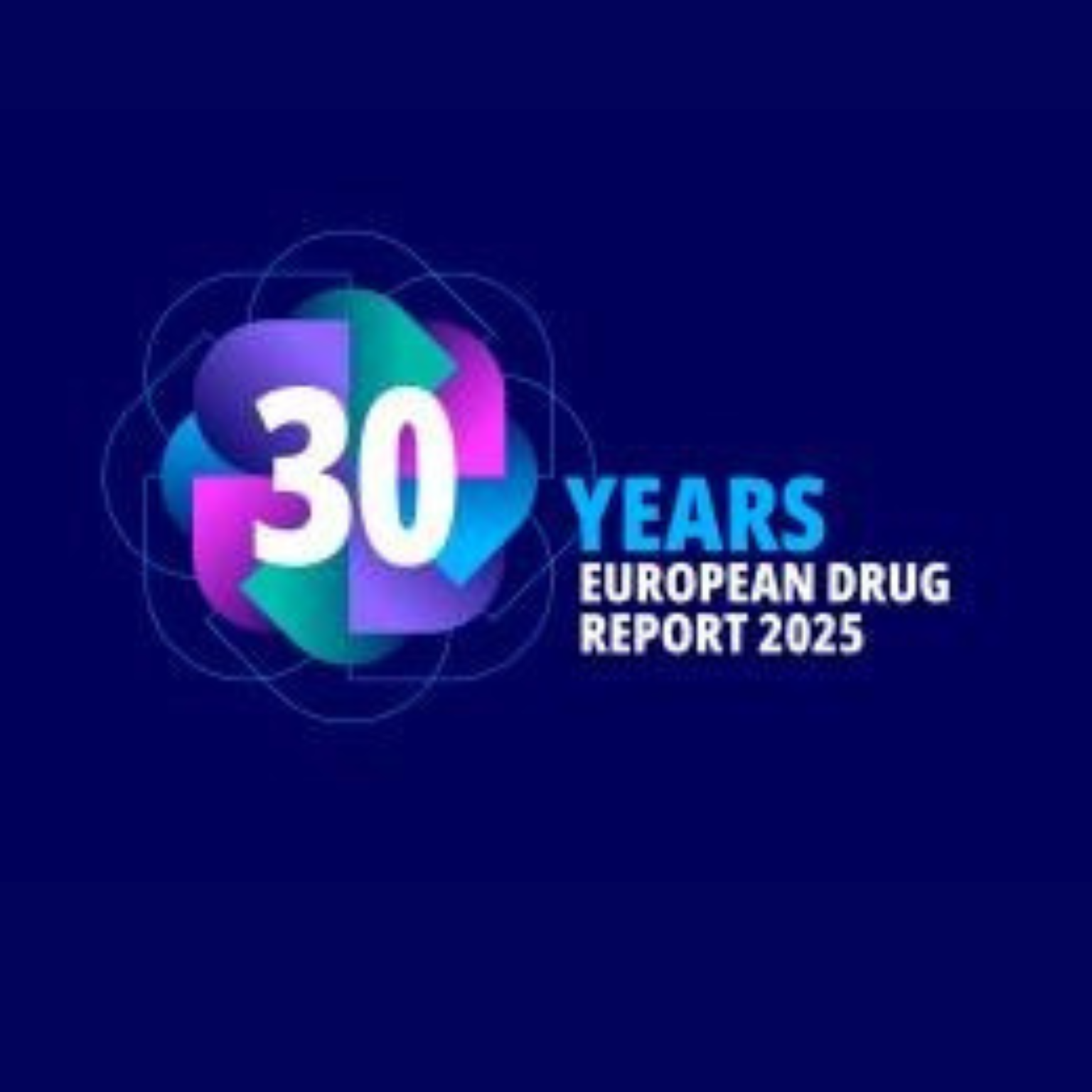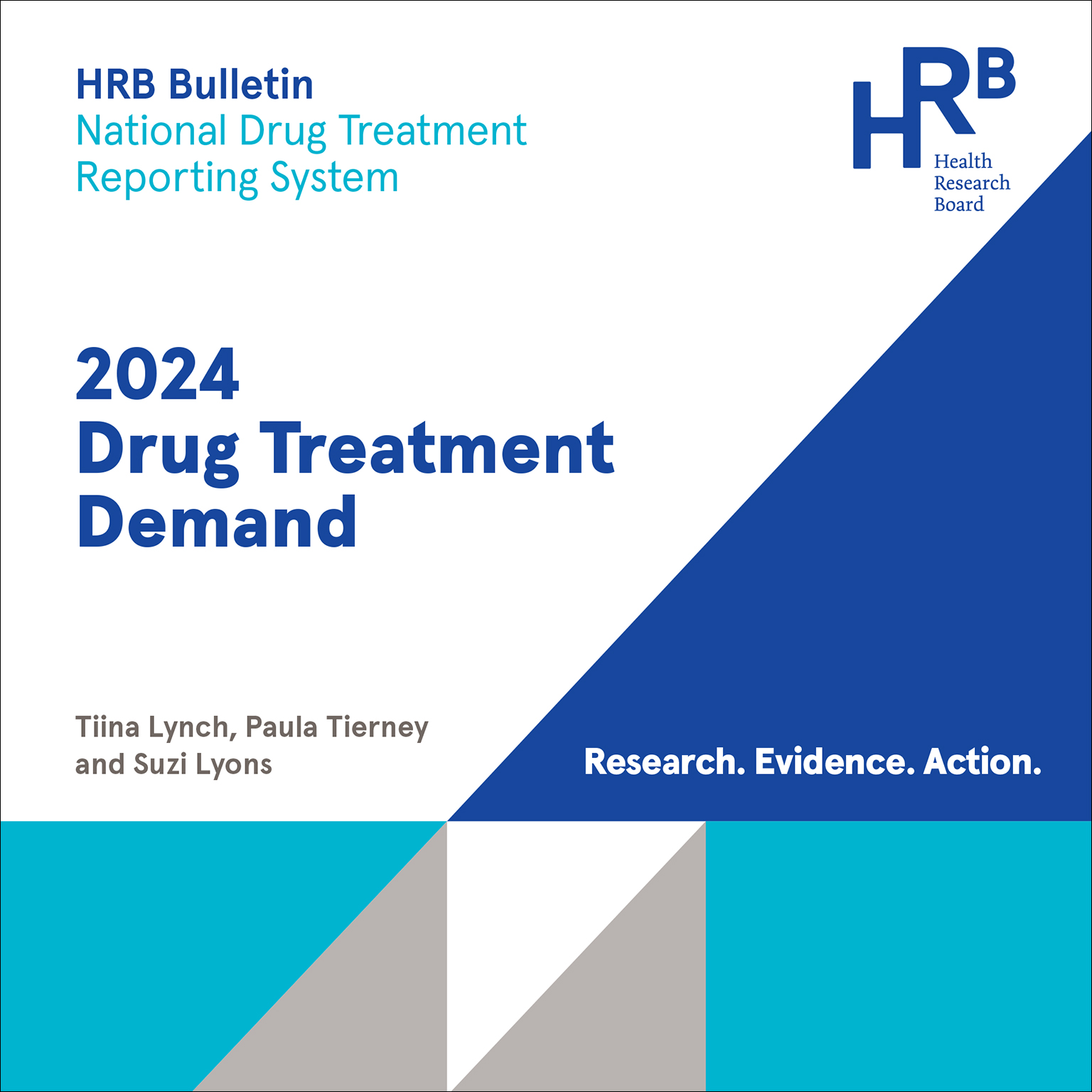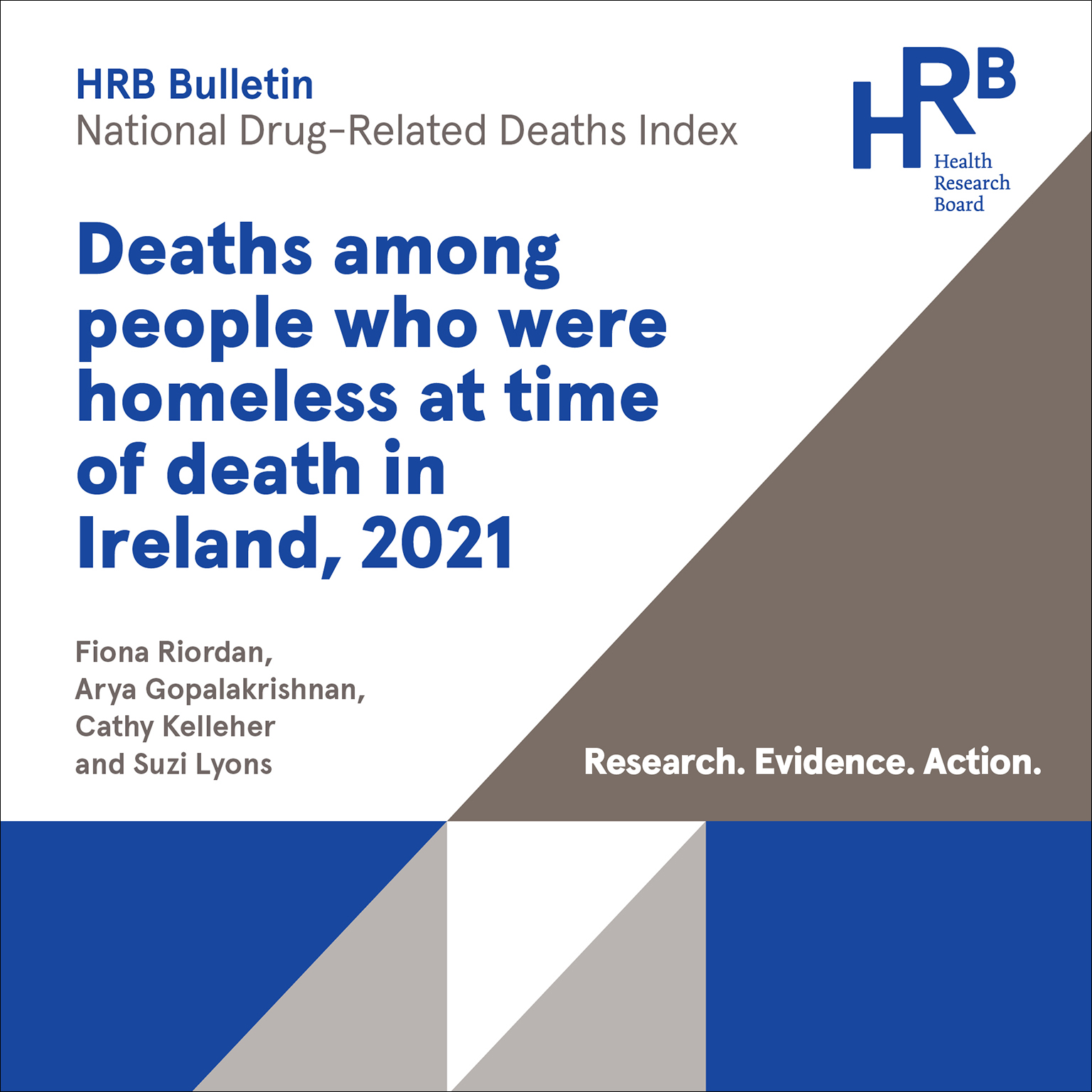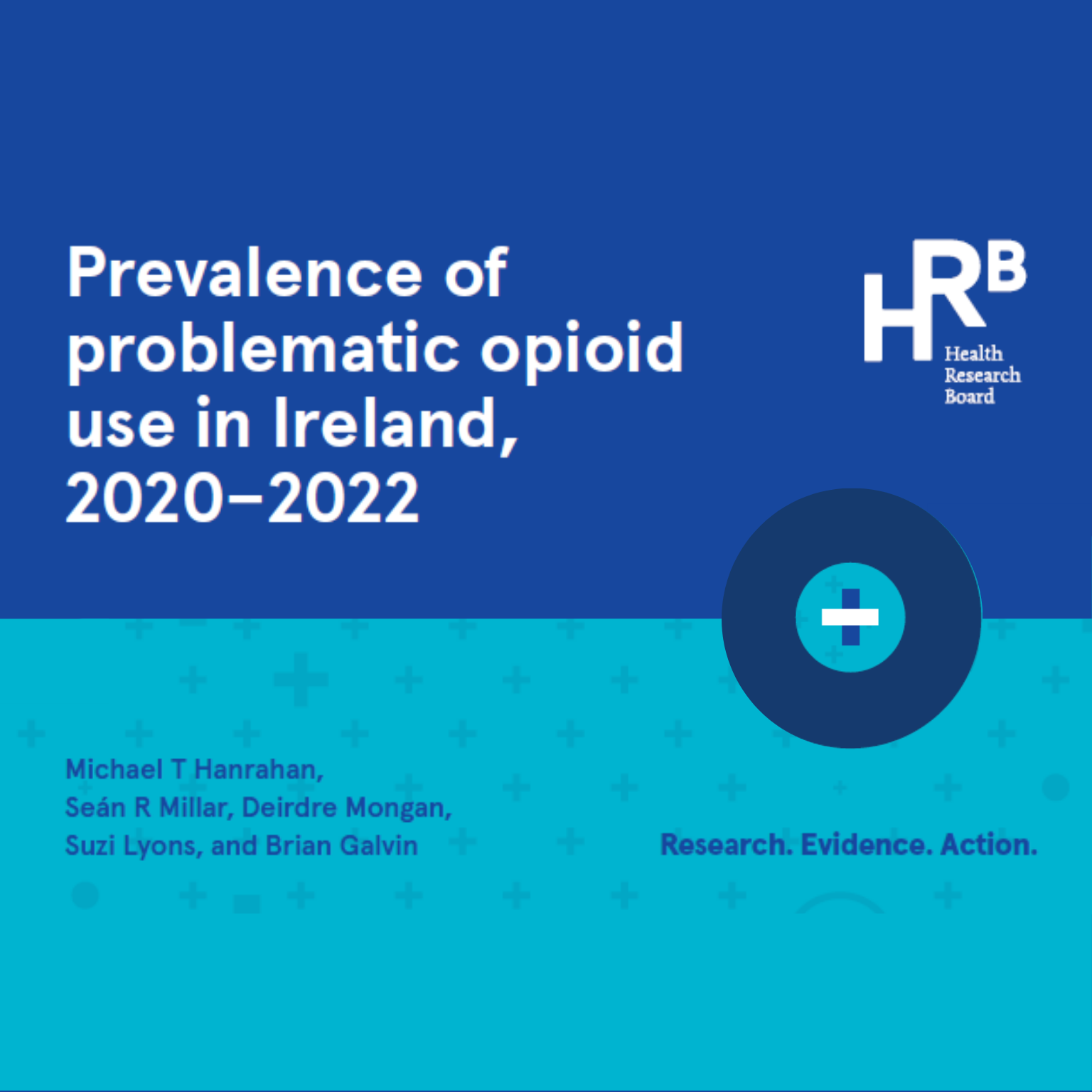Cocaine treatment triples between 2015 and 2021
The latest figures from the Health Research Board (HRB) show continued growth in the number of cases* seeking treatment for problem cocaine use, with cocaine overtaking heroin as the main problem drug among cases reported to the HRB.
5 min read - 13 Jun 2022
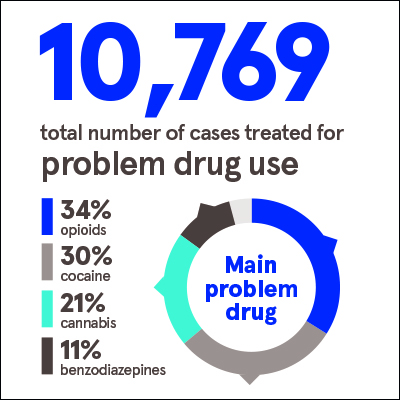
Figures in the HRB report National Drug Treatment Reporting System: 2015-2021 Drug Treatment Data show a total of 10,769 cases were treated for problem drug use in 2021. Two in every five of these cases were new to treatment. Almost one in three cases sought treatment for cocaine.
Opioids (which include heroin and methadone) were the main problem drug for which cases sought treatment, followed by cocaine, then cannabis and benzodiazepines. Cocaine was the main problem drug among new cases.
Commenting on the key findings of the report, HRB Chief Executive Mairead O’Driscoll said:
“This year’s drug treatment figures bring into sharp focus the growing prevalence of cocaine as a problem drug in Irish society. By providing timely data the HRB can deliver important insights into trends in drug treatment that can inform policy and practice in relation to supporting treatment approaches as well as addressing risk factors and prevention.”
Dr Suzi Lyons, Senior Researcher at the HRB, says:
“We are observing a sustained increase in cocaine treatment year-on-year. In 2019 we saw cocaine overtake cannabis as the main problem drug; this year the numbers reported as seeking treatment for cocaine exceed those for heroin – which may mark a tipping point in Irish addiction trends. While we are seeing a decrease in the proportion of cocaine cases taking more than one drug, almost two-thirds are mixing cocaine with other drugs. This is a concern as mixing drugs can impact recovery and increase risk of overdose.”
Cocaine trends
- There was a threefold increase in the number of cases treated for cocaine as a main problem, from 1,026 in 2015 to 3,248 in 2021.
- Cocaine was the second most common drug reported in 2021, accounting for almost a third of all cases.
- In 2021, for the first time, the NDTRS recorded more cocaine (3,248) than heroin (3,168) cases among those treated for drugs as a main problem.
- Cocaine was the most common main drug among new cases in 2021.
- The proportion of females reporting cocaine as a main problem drug is increasing. Until 2020, females accounted for one in every five cases with cocaine as a main problem drug, this has risen to one in four cases in 2021.
- In 2021, crack cocaine accounted for 17% of all cases treated for cocaine as a main problem, increasing from 9% of cases in 2015.
- For cocaine treatment, the proportion of cases in paid employment increased from 24% in 2015 to 34% in 2021, fluctuating in the years between.
Commenting on other trends, Dr Suzi Lyons says:
“We have seen some positive developments as regards risk behaviour, with the proportion of cases that had ever injected drugs decreasing from around one-third in 2015 to just over one-fifth in 2021. The reduction is even more notable for new cases, and in 2021 only 4% reported ever injecting compared to 15% in 2015.
“And while there has been an overall reduction in cases reporting cannabis as a main problem, there is an increase in the number of cases reporting it as an additional problem.”
Additional findings reported are summarised below:
Other main problem drugs (excluding alcohol)
- Opioids (mainly heroin) were the most common main problem drug reported in 2021.
- Heroin accounted for 87% (3,168) of all opioid cases in 2021.
- Cannabis was the third most common main drug reported in 2021.
- Benzodiazepines were the main problem drug for 11% of cases in 2021, an increase from 9% of cases in 2015.
Polydrug use (problem use of more than one drug)
- Over the period, polydrug use was reported by over half of cases (58%).
- The proportion of cases with polydrug use decreased from 61% in 2015 to 53% in 2018 but increased to 58% in 2021.
- Cannabis was the most common additional drug in 2021, followed closely by cocaine, benzodiazepines and alcohol.
Socio-demographic characteristics (all drugs)
- The median age of cases increased from 30 years in 2015 to 32 years in 2021.
- Seven-in-ten (73%) cases reported over the period were male.
- The proportion of cases recorded as homeless increased from 9% in 2015 to 13% in 2021.
- The proportion of cases with an Irish Traveller ethnicity was 2.9% in 2015 and 3.4% in 2021.
- The proportion of cases recorded as unemployed decreased from 64% in 2015 to 59% in 2021.
- The proportion of cases in paid employment increased from 9% in 2015 to 21% in 2021.
- In 2021, one-in-six cases treated for problem drug use were residing with children aged 17 years or younger.
* It is important to note that each record in the NDTRS database relates to a treatment episode (a case), and not to a person. This means that the same person could be counted more than once in the same calendar year if they had more than one treatment episode in that year.
ENDS
The full report and accompanying infographic are available to download from the HRB website:
Download full report
Download infographic
For further information or to organise interviews with experts, please contact:
Anna Dunne, Communications Officer, Health Research Board
m +353 85 859 0339 e adunne@hrb.ie
NOTE TO EDITORS
This report describes trends in treated problem drug use (excluding alcohol) for the seven-year period from 2015 to 2021. The data are drawn from the National Drug Treatment Reporting System (NDTRS), the national surveillance system that records and reports on cases of drug and alcohol treatment in Ireland.
The Health Research Board (HRB) is Ireland’s lead funding agency supporting innovative health research and delivering data and evidence that improves people’s health and patient care. We are committed to putting people first, and ensuring data and evidence are used in policy and practice to overcome health challenges, advance health systems, and benefit society and economy.
5 min read - 13 Jun 2022
